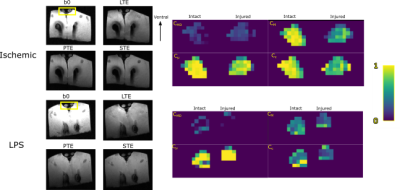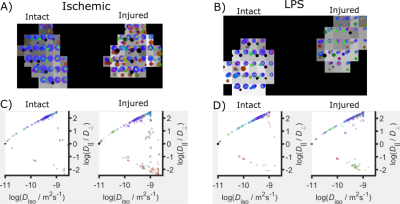Ricardo Rios-Carrillo1, Ricardo Coronado-Leija2, Hiram Luna-Munguía1, Alonso Ramírez-Manzanares3, and Luis Concha1
1Instituto de Neurobiología, Universidad Nacional Autónoma de México, Querétaro, Mexico, 2Radiology, New York University School of Medicine, New York, NY, United States, 3Centro de Investigación en Matemáticas, Guanajuato, Mexico
1Instituto de Neurobiología, Universidad Nacional Autónoma de México, Querétaro, Mexico, 2Radiology, New York University School of Medicine, New York, NY, United States, 3Centro de Investigación en Matemáticas, Guanajuato, Mexico
Analysis of B-tensor encoding through QTE and DTD imaging is sensitive to white matter damage, and suggestive of specific diffusion signatures of axonal degeneration and inflammation.

